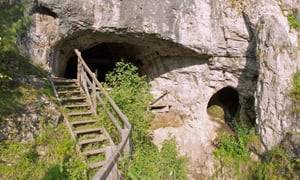Researchers made the discovery when they examined DNA extracted from the bone and found that it contained chromosomes from a Neanderthal female and a Denisovan male. It is the first time that the offspring of such a coupling has been identified.
“If you had asked me beforehand, I would have said we will never find this, it is like finding a needle in a haystack,” said Svante Pääbo, director of the Max Planck Institute for Evolutionary Anthropology in Leipzig, Germany. “And then we stumbled across it. I was very surprised.”
The discovery has led scientists to suspect that different groups of archaic humans, including the ancestors of people alive today, had few qualms about interbreeding when the chance arose. “I’m beginning to think that when these groups met, they were quite happy to mix with each other,” Pääbo said.
Until 40,000 years ago, Eurasia was home to both groups of archaic humans with Neanderthals in the West and the elusive Denisovans in the East. Although the groups separated from each other more than 390,000 years ago, they occasionally crossed paths, and evidently got along royally when they did.
One place where the groups overlapped was the Denisova cave in the Altai mountains in southern Siberia. It is here, and only here, that archaeologists found bits of bone belonging to what are now known as the Denisovans. Pieces of Neanderthal bone have also been unearthed in the cave too. That the material is so fragmented is blamed on hyenas: traces of DNA and etch marks from acid suggest at least some of the bones had passed through the animals’ stomachs before being lost in the cave sediments.
In research published in the journal Nature, Viviane Slon and others in Leipzig describe how they examined a 2.5cm chunk of bone from the Denisova cave. They found that it belonged to a girl who was at least 13 years old when she died more than 50,000 years ago. But more striking was her parentage. While her mother passed on Neanderthal genes, the girl inherited Denisovan DNA from her father, who himself had a very distant Neanderthal ancestor. “This implies that when individuals of the two groups happened to meet, they interbred, much more so than was previously thought,” Slon said.
The suspicion that distinct groups of ancient humans were happy to interbreed undermines the view that Neanderthals and Denisovans were wiped out through violent conflict with modern humans who arrived in Eurasia 60,000 years ago. Instead, they may simply have been absorbed into the population. “It may have been a much more peaceful scenario,” said Pääbo. Thanks to that inbreeding, the DNA of some Australasians, notably those from Papua New Guinea, is about 5% Denisovan. Meanwhile, modern humans from outside Africa carry about 2% Neanderthal DNA. In total, about half of the Neanderthal genome is alive and well in people living today.
Scientists have little idea what the Denisovans looked like, but some hints have emerged. A handful of Denisovan teeth recovered from the cave are much larger than those of Neanderthals, and work that will be published soon finds that a piece of Denisovan skull is thick compared with other ancient humans. “They seem to have been very large and robust, even compared to Neanderthals,” said Pääbo. “They were probably pretty impressive.”
Sharon Browning, who studies populations of ancient humans at the University of Washington, said the finding was “very intriguing.”
“Finding remains from a first generation admixed individual should be a very small probability occurrence, unless perhaps interbreeding between Neanderthals and Denisovans was not uncommon at a small number of locations, such as the Denisova cave, where the groups’ ranges overlapped,” she said.
The researchers are now analysing sediment from the Denisova cave for traces of DNA that will clarify when different groups of humans sheltered in the refuge. Somewhere in the cave there might be more pieces of bone that reveal further details of the girl’s story. “Maybe we will find the parents one day,” said Pääbo.
More about: #science


























-1745485667.jpg&h=190&w=280&zc=1&q=100)





















